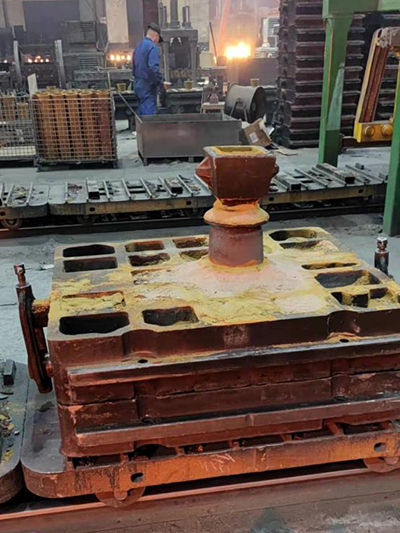How Long Does Sand Casting Take?
Sand casting is one of the oldest and most popular methods of metal casting. It involves creating a mold from sand to produce a desired shape. This technique is widely used for manufacturing parts in various industries, from automotive to aerospace. While the efficiency of sand casting can vary based on several factors, understanding the typical timeline for the process can help businesses plan their production schedules effectively.
The Sand Casting Process
The sand casting process can generally be broken down into several key steps
1. Pattern Making The first step involves creating a pattern that serves as a replica of the final product. Patterns are usually made from materials like wood, metal, or plastic. This phase can take anywhere from a few days to several weeks, depending on the complexity of the design and the materials used.
2. Mold Preparation Once the pattern is ready, a mold is created using sand mixed with a binding agent. The pattern is pressed into the sand to form a cavity that reflects the desired shape of the final product. This step can take a few hours to a couple of days, particularly if multiple molds are required for mass production.
3. Melting and Pouring Next, the metal is melted in a furnace. This step can be relatively quick, often taking just a few hours, but it also depends on the type of metal being used and the size of the batch. Once the metal reaches the correct temperature, it is poured into the mold; this crucial phase might take just a few minutes, depending on the size and weight of the casting.
4. Cooling After the molten metal is poured into the mold, it needs time to cool and solidify. Cooling time can vary significantly based on the thickness of the casting and the type of metal used. A typical cooling period can last anywhere from a few minutes to several hours.
how long does sand casting take

5. Mold Removal Once the metal has cooled sufficiently, the sand mold is broken away to reveal the cast part. This step can take a couple of hours, especially if the casting is complex and requires careful handling to avoid damaging the finished piece.
6. Finishing Finally, the cast part may require additional processes such as trimming, machining, or surface treatment to meet the required specifications. The finishing phase can extend the total processing time by several hours to days, depending on the complexity of the finishing operations.
Total Timeframe
In ideal conditions, the entire sand casting process – from pattern making to finishing – can take anywhere from a few days to several weeks. The total duration largely depends on
- Complexity of the Design More intricate patterns and molds take longer to create. - Material Choices Certain metals require longer melting and cooling times. - Production Volume High-volume productions often streamline processes to reduce turnaround times.
Conclusion
Understanding how long the sand casting process takes involves considering various phases and factors affecting production efficiency. While sand casting can range from a few days to several weeks, advancements in technology and better planning can significantly reduce turnaround times. As industries continue to evolve, so too will the methods for optimizing the sand casting process, making it an even more vital component in modern manufacturing. Whether for a custom prototype or mass production, knowing the timelines involved can help businesses effectively manage their operations and meet market demands.
Post time:Ное . 30, 2024 10:30
Next:Ceramic Sanding Discs for Superior Surface Finishing and Long-Lasting Durability
